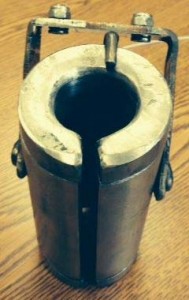Executive Summary

Harvesting Systems Unit, Mississippi Laboratories, Southeast Fisheries Science Center, NOAA Fisheries Service
Due to the migratory patterns of Atlantic highly migratory species, U.S. fishermen that target Atlantic swordfish and tunas using pelagic longline gear sometimes encounter other species in their catch. This incidental catch – known as bycatch – is unwanted and causes fishermen to lose productivity. In addition, at times protected species – such as sea turtles and marine mammals – are also caught on their gear.
NOAA Fisheries Service has developed effective safe-handling tools and protocols that fishermen utilize when releasing these protected species, which have been shown to work quite well when properly employed. However, one current limitation of the tools is their reach – current tools can only be used within a short distance from the fishing boat, while fishing leaders are often over 100 feet long. Research suggests that eliminating or greatly minimizing the amount of this trailing gear on released bycatch significantly enhances its chances of survival.
To improve on the current tools, NOAA Fisheries Service developed prototype devices that are designed to slide along the leader line to the hooked animal and cut the line with only a few inches of gear attached, a significant improvement over the current tools. In cooperation with NOAA, Vast Array Corporation worked with pelagic longline fishermen to test these devices in at-sea conditions.
The results of this testing is clear: these devices have great potential to reduce the amount of gear remaining attached to hooked bycatch that is released. The devices are also safer for fishermen to operate than some current practices with existing tools. In summary, NOAA Fisheries Service has developed a tool – proven effective – that can greatly improve the condition of hooked bycatch that is released.
Project Information
- Project Sponsor
This work was supported by NOAA Fisheries Service through 2014 National Bycatch Reduction Engineering Program grant award NA14NMF4720322.
- Project Awardee
Vast Array Corporation
- Project Collaborators
- Principal Investigator: Ms. Terri Lei Beideman, Chief Executive Officer, Vast Array Corporation
- Project Coordinator: Mr. Benjamin F. Beideman, Chief Operations Officer, Vast Array Corporation
- NOAA Fisheries Service Partner: Mr. Charles Bergmann, Fisheries Methods and Equipment Specialist, Harvesting Systems Unit, Mississippi Laboratories, Southeast Fisheries Science Center
- Project Cost
[table width=”500″ colalign=”left|right” delimiter=”|”]
Category|Amount
Federal Funds Awarded|$51,935.00
Unexpended Federal Funds|-1,252.50
Awardee Matching Funds|5,500.00
Total Project Cost|$56,182.50
[/table]
